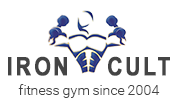Energy Leak and Squatting cues
By vishwa on Training
April 25, 2017
What is energy leak?
The squat is a very technical whole body movement. The more effective you are in the squat the more weights can be lifted efficiently. However, if your technique is faulty, which can occur due to several reasons, it can lead to energy leaks—wasting of energy. In other words, you want to squat efficiently to avoid energy leaks, as energy leaks can cause injuries.
Squatting cues
On the same note, there are a few basic cues to squat effectively. These are some of the general technical points to remember while squatting. However, this is by no way is the be all and end all of fixing a faulty squat. For example, a person with a long femur (thigh bone) is at a biomechanical dis-advantage when compared to a person who has short femur.
1) The set up
Make sure that when you approach the bar you get set properly before un-racking the bar. We typically would want to squat efficiently and lift more weights. Please note that the low bar uses more muscles, so the preferred bar position would be the low bar. You place the bar high or low, it’s an individual preference. For instance, Olympic lifters favor the high bar setup.
Next would be the hand placement. A closer hand set up is preferred as it allows for a tighter setup in regards to the upper body.
2) Breathing
Breathing is extremely important once you load the bar. You want to take a deep breath with the diaphragmatic breathing technique—sucking air and trying to expand the diaphragm not the chest. This will keep the trunk stable and a strong back leading to more stability. Typically you suck more air when you go down and exhale at the top.
I knew about this technique but I didn’t heed much. All I did and asked my gym clients to do was to brace the body for a better squat. However, if you are loading more weights the diaphragmatic breathing is ideal, and it really works.
3) Foot placement
Foot stance will vary depending on the body structure, but, generally, shoulder width stance or slightly wider is the norm.
The mid-foot balance point is the position favored by the body for balance. In other words, the barbell is directly over the mid-foot. Also, the barbell should remain in the same line even while squatting. If the bar is off-balance the added energy you expend due to the off-balance load, makes the weight on the bar much harder to lift.
4) Back Position
Keeping the spine in neutral or slight extension throughout the squat is the next step and never do the posterior tilt (round the back). Staying tall (chest up) is the optimal position. However, excessive anterior tilt also needs to be avoided—lifting the tail up.
5) Knee position
Keeping the knees in line with the toes or slightly outside is the rule. The knee out cue is often used to prevent the inward knee collapse.
Another means to effectively stabilize the hips, knees, feet (especially ankle instability) is to screw your feet into the ground. I personally practice this cue with my gym clients who struggle with inward knee movement (valgus knee collapse) or ankle collapse.
As stated earlier, the above proven steps are not the only required cues, but they can be the basic factors that are considered for a better squat. Last but not the least, energy wasting can takes its ugly form and can lead to a chronic injury. Injuries are the last thing you would want in a gym.

